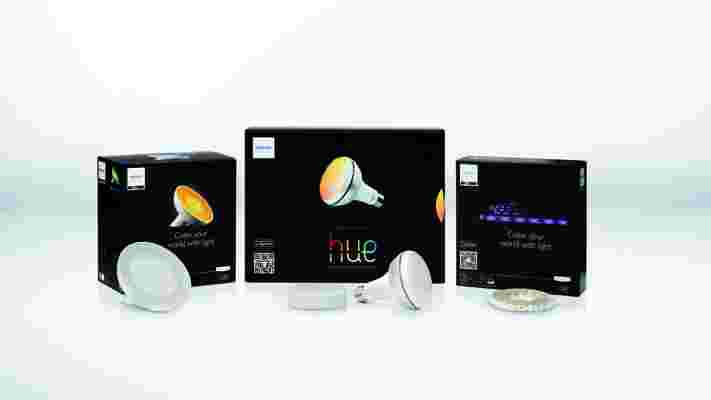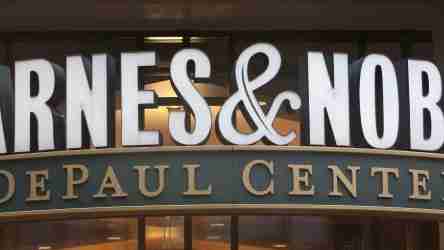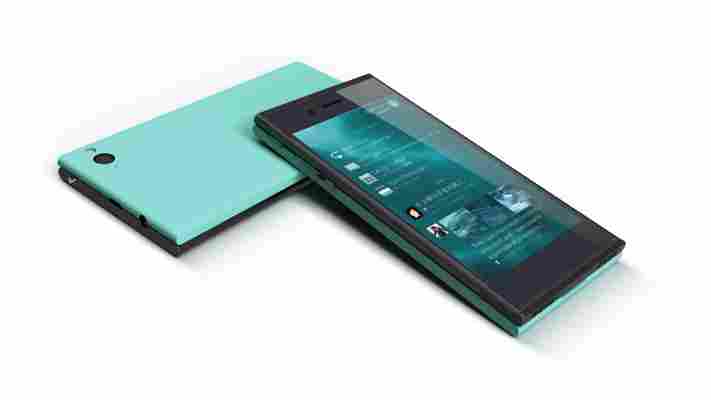Growing its line of colorful Web-enabled light bulbs, Philips has introduced the new Hue BR30 Downlights – a new series of bulbs designed for spotlights and feature walls. This expansion comes after the company released two Friends of Hue accessories, the LivingColors Bloom and LightStrips – this past August.

The Downlights are available in an introductory three-bulb pack just like the original Hue bulbs except this time, the set features larger bulbs that cover a wider surface area. The starter pack comes complete with the Hue Bridge to connect the bulbs to the Internet, so users can turn the lights on, off, or change their colors straight from their smartphone.
Because the Downlights are larger than the original Hues, it’s also slightly more powerful at 630 lumen per bulb (compared to Hue’s 600 lumen). Shelf life remains the same at 15,000 hours per bulb, and all the integrated iOS and Android features are still there, such as IFTTT and geofencing.
In addition to the new Hue bulbs, Philips also announced a partnership with Disney to offer StoryLight – a specially-designed bulb set that syncs with Disney e-books to create an atmosphere that matches the magical tales. Hues can also now integrate with the Philips AVENT Smart Baby Monitor to set mood lighting to help ease infants to sleep.
If you already own the original Hue starter pack, you can purchase the Downlights individually and sync them to your existing Bridge network. The Hue BR30 Downlights and StoryLight starter pack will go for $199 a set, and each Downlight bulb costs $59. All are available today in the US at the Apple Store, Amazon, and Appleom.
➤ Philips Hue
Barnes & Noble will no longer make its own NOOK tablets, moves to a partner-centric model instead
Barnes & Noble has been struggling to sell its range of NOOK tablets for some time now, so it comes as no surprise that it’s decided to change tact and stop manufacturing them in-house .

The company announced as part of its fiscal 2013 year-end financial results that it would continue to design its own eReaders and eBook platform, but also create a new partnership model for manufacturing multifunctional color tablets.
“We are taking big steps to reduce the losses in the NOOK segment, as we move to a partner-centric model in tablets and reduce overhead costs,” William Lynch, CEO of Barnes & Noble said. “We plan to continue to innovate in the single purpose black-and-white eReader category, and the underpinning of our strategy remains the same today as it has since we first entered the digital market, which is to offer customers any digital book, magazine or newspaper, on any device.”
The book retailer slashed the prices of its flagship NOOK HD+ and NOOK HD tablets in the US last month as part of a new Mother’s Day offer. It follows a similar sale in March this year, which meant that consumers were given a free NOOK Simple Touch e-reader with every new NOOK HD+ tablet.
The company has been driving forward from a software standpoint and is likely to make greater gains on a wider range of tablets. It will be launching a new NOOK App for Kids on Fuhu’s range of nabi children’s tablets and recently added over 8,000 graphic novels to its NOOK for iOS app. Alongside NOOK Press, a self-publishing service for new and emerging authors, it’s clear that Barnes & Noble is doing everything it can to stave off Amazon.
The company says it will continue to sell its NOOK HD and NOOK HD+ tablets throughout the year, and promises to support the platform with ongoing software upgrades and improvements to its digital bookstore service.
The announcement is an admission that Barnes & Noble has failed to make a meaningful impact in the tablet space. The company specializes in selling books, rather than creating hardware, so it might find better luck partnering with other device manufacturers.
The improved Google Play store and Newstand apps for iOS and Android is chipping away at the company’s potential market share, which is why both Barnes & Noble and Amazon have pushed their digital storefronts onto these platforms as third-party apps. The trade-off is that it disincentives purchasing NOOK tablets – if consumers know they can access the same software from a cheaper or more powerful low-end Android tablet, there’s little reason to slump for a NOOK.
Barnes & Noble is in a quagmire at the moment, but if it can choose some innovative manufacturers to partner with, there’s a chance it could revitalize the NOOK brand once more.
Image Credit: Scott Olson/Getty Images
Jolla’s first Sailfish OS-equipped smartphone to be released November 27
Mobile device and OS maker Jolla has announced that its first smartphone will be released on November 27 in Finland.

The company revealed the release date at the Slush conference in Finland today, adding that it would first go on sale through the mobile operator DNA’s pop-up shop in Helsinki.
The button-less handset runs its own Sailfish OS which is based on Mer , an open source operating system found in a range of devices, from phones to domestic connected devices.
Hardware specs of the device include a 4.5-inch display, 16GB of internal storage and a microSD slot. It’s also 4G-enabled and has a replaceable battery, which can’t be said of all modern smartphones.
Check out our hands-on with the Jolla’s first smartphone to find out what the Finnish company has in store when sales are expanded to other countries.
